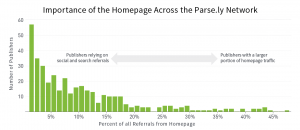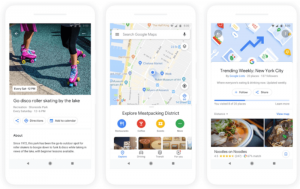
There is a myth out there. The myth outbound marketing is dead.
It’s dead because no one wants to be disrupted anymore. We mute television commercials, ignore online pop-up ads, and we “spam” emails that try to market to us. Facebook users usually ignore those targeted ads that show up in their news feed, on the rails of our Internet home pages, and our search engine results. We hang up on pesky telemarketers. Inbound marketing is the new shiny advertising tool that all marketers are focusing on – quite furiously, actually.
And there is strong case to be made for inbound marketing.
It is less disruptive; it comes couched in rich content that entertains and educates – on blogs, news sites, and social media platforms. But what if all of that inbound marketing doesn’t give you the results you want? What if you are not making enough of those contacts that you believe you should?
It does happen. Marketers hit a plateau at which inbound marketing is no longer bringing in the numbers they want. What happens then? Well, then, you have to go knocking on their doors directly. And this is defined as “outbound marketing.”
Why Outbound Marketing Lives On
There is no doubt that outbound marketing has evolved. Consumers are savvy and understand and recoil from “hard sells.” But evolution of strategies does not mean that it no longer effective.
Outbound marketing still attempts to reach targets through traditional methods – television, radio, and newspapers go after a broad, general audience. There are personal face-to-face meetings. There is also cold-calling, which is the most impersonal marketing of all. These strategies are meant to develop leads – leads that can be nurtured and followed up upon. And that may be where inbound marketing is the best established with a target – driving leads to a website or a social media page, getting an email address for additional nurturing, etc.
The goal of outbound marketing, then, is to start a conversation by spreading the word that a product or service exists.
Types of Outbound Marketing – Who Uses It?
Traditionally, the following outbound marketing strategies have been utilized:
- TV/radio commercials
- Telemarketing/Cold Calling
- Press Releases
- Newspaper Advertising
- Trade Shows
- Direct Mail – flyers, brochures, catalogues
- Branded Products – magnets, key chains, pens, etc.
- Door-to-Door Canvassing
TV Marketing
While some of these strategies are certainly in a period of demise (e.g., door-to-door, telemarketing and print newspapers), others are widely used, because companies see them as a rapid method of reaching a wide audience. Coca-Cola, automobile manufacturers, investment and insurance companies all pick certain outbound venues – TV being the most widely used.
And companies can target their market by selecting which programs will have a specific viewing audience. For example, financial and investment companies pick specific programming for their advertising- nightly world news, for example.
Radio
Radio offers solid outbound marketing for local businesses, and again they can pick times of day and stations to which their targets listen. The positive impact of radio advertising was the subject of a Nielsen Study. One of the findings was that for every dollar spent in radio advertising by local retailers, an average of $ 6 revenue is generated within a month after the advertising airs.
Direct Mail
Local businesses find that, in most instances, outbound marketing is more effective. Thus a local restaurateur will advertise in flyers, with coupons for discounts. Local car dealerships will use the postal system to send brochures and flyers that advertise sales and new arrivals. They can even target former customers better than they can reach them online.
The use of direct mail, in fact, can serve as reasonably inexpensive method of testing the market for a new product even for a company that plans to market a product nationwide. Such a company may conduct outbound marketing in a specific geographic area to test response to its product.
Trade Shows
All major cities have large trade shows, most on an annual basis. Thus, consumers go to auto and home shows. Las Vegas hosts the annual Consumer Electronics Show. These are all examples of outbound marketing.
Each year new trade show trends emerge mixing innovation with good old practices – from using iBeacons and push messages to lure users to the booth, to going wild with the decor and lightning. And trade shows are popular, because consumers can put their hands on a physical product and see it concretely rather than just view its image online. Trade shows are a great venue to get leads and market new products/services. And the follow-up with those leads is most assuredly all outbound marketing and will entail direct person-to-person nurturing.
Email Marketing
While leads may very well have been generated through inbound marketing, something has to be done with those leads to convert them to paying customers. Outbound email marketing is a perfect venue. A study which asked consumers, “What is an effective way for a company to attract your business,” 53.5% responded with the desire to receive mail with offers and discounts.
Marketers, just as they used to do for regular mail, can purchase lead lists based upon their identified customer persona and, once that expense is out of the way, can conduct mass email campaigns at little to no cost. This makes ROI quite high.
Outbound Marketing – Who Responds to It?
It is often thought that outbound marketing is for older generations. They are the ones who have the most difficulty with new technology, who still watch traditional TV, read print newspapers, and take the time to go through mailbox flyers. Older people are used to these outbound marketing venues, and they are comfortable with them.
But to assume that, as older generations die off, so too will most outbound marketing venues, is to make a mistake. There are lasting outbound marketing venues and strategies that will continue – those covered above specifically. Trade shows will not die out; local mailbox offers, local radio advertising, and even targeted TV ads will continue. Technology will also continue to be used for outbound marketing – emails and press releases to name just two.
Outbound marketing is also effective for B2B marketing and for companies that market high-end or “exclusive” products. B2B marketing ultimately must be face-to-face and is usually in response to outbound efforts. B2B marketers develop their lists of potential customers and then engage in personal contact, either through direct contact or, perhaps, at trade shows.
Outbound and Inbound Can Co-exist for Greater Revenue
Some companies with a strong Internet presence still market their “exclusive” products with traditional outbound strategies. Recently, an online company that produces custom men’s shirts began to advertise on television, targeting programs that business executives are prone to watch. Potential customers are directed, by the TV ad, to the company website where they can actually use their smartphones to get their measurements and order their shirts. This is a perfect example of the use of both outbound and inbound marketing to target an audience and get consumers into the sales funnel. And companies that can integrate both will be way ahead of those that think they must focus on one or the other
The reports of the demise of outbound marketing are greatly exaggerated. Smart marketers are analyzing the benefits of targeting audiences with solid outbound campaigns quite effectively.
Business & Finance Articles on Business 2 Community(132)
Report Post





